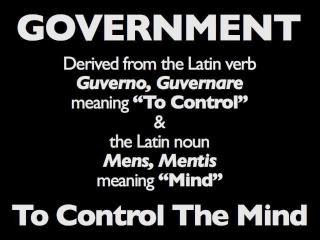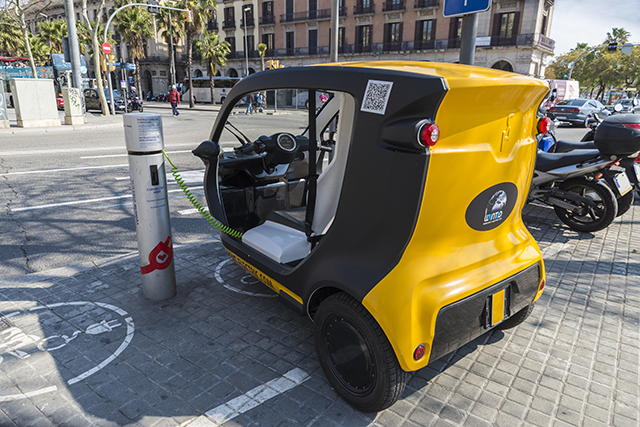EV owners complain about “logistical nightmare” caused by lack of charging stations
03/01/2023 / By Arsenio Toledo

Owners of electric vehicles (EVs) in the United States are finally admitting that it is a total “logistical nightmare” to own these cars due to the stresses that come with looking for charging stations and waiting around for hours to recharge.
One EV owner, YouTube personality Steve Hammes, discussed how difficult it was for his family when he leased a Hyundai Kona Electric subcompact sport utility vehicle for his 17-year-old daughter Maddie. (Related: EV NIGHTMARE: Man spends 15 hours to travel 178 miles, proving EVs are unsuitable for long-distance travel.)
Hammes believed this was a smart option because the SUV was affordable, practical and allowed Maddie to put more of her savings toward her college fund rather than spending it on fuel. Unfortunately, Hammes ran into a dilemma many residents of Upstate New York are also running into: not being able to find charging stations far away from home.
Owners have noted that charging stations, especially in rural areas, are fewer and far between than those located in more urban areas.
“We’re going through the planning process of how easily Maddie can get from Albany to [Gettysburg College, Pennsylvania] and where she can charge her car,” said Hammes in an interview with ABC News. “It makes me a little nervous. We want fast chargers that take 30 to 40 minutes – it would not make sense to sit at a Level 2 charger for hours. There isn’t a good software tool that helps EV owners plan their trips.”
There are three levels of EV charging. Level 1 can plug into typical household 120-volt outlets and could add between two to four miles of range per hour of charging. Level 2 outlets are typically only found at charging stations and can provide EVs with between 12 to 32 miles of range per hour of charging.
Level 3, or fast charging, is even rarer than Level 2 due to the kind of high-voltage setups required. But these stations can typically add anywhere between 100 to 250 miles of range with just 30 to 45 minutes of charging.
Jared Rosenholtz, editor-at-large for CarBuzz, has downloaded at least eight different apps on his phone from different electric vehicle charging companies like EVgo, Electrify America, ChargePoint and Shell Recharge just so he can power up the EVs he is tasked with reviewing. Not only do these apps clutter his phone, they also require an outstanding balance to use, highlighting how difficult it is for EV owners to map out where they can charge.
“It’s like having an E-ZPass account,” said Rosenholtz. “If your account balance gets low, the app pulls from your credit card on file and charges another $10. I probably have $8 to $10 in each of these apps, just sitting there.”
No improvement in EV infrastructure in past few years
John Voelcker, an industry expert on EVs and the former editor of Green Car Reports, noted that he has seen little improvement in the nation’s EV charging infrastructure in the last four years and he repeatedly hears complaints regarding deficient charging outlets.
Voelcker pointed out that the federal government’s incentives are geared toward creating more charging stations, not “making sure they actually work,” which can lead to charging outlets in the middle of nowhere not having enough power to provide travelers with enough charge quickly.
Tony Quiroga, editor-in-chief of Car and Driver, is very familiar with this predicament. He has become a familiar face in a Mexican restaurant and a coffee shop in Burbank due to how long he spends there while the EVs he tests sit and charge at a station.
“I imagine an ecosystem will be built around charging stations eventually,” said Quiroga. “Longer trips bring up flaws in EVs. People are leery of taking them on long trips – that’s why older EVs don’t have 40,000 miles on them.
Quiroga further noted that even his own team of reporters has to carefully plan and calculate how far EV charging stations are when they conduct comparison tests among EV manufacturers.
“These comparison tests are a logistical nightmare. We plan meals around recharging the vehicles,” he said. “We need to have the battery at 100 percent or close to it to test a vehicle’s performance. We have to time everything – it requires more work.”
The administration of President Joe Biden recently announced that they have been able to get Tesla to agree to open up its network of Supercharger stations to non-Tesla owners by 2024. This plan includes at least 3,500 Tesla fast chargers and 4,000 Level 2 chargers all across the country.
Biden has also set a goal of installing 500,000 new charging stations across the United States and dramatically boosting EV sales by 2030.
Learn more about electric vehicles at RoboCars.news.
Watch this clip of electric vehicle entrepreneur Jason Wilde discussing how he found it challenging to go on a long road trip through Montana due to the lack of charging stations in the state.
This video is from the Daily Videos channel on Brighteon.com.
More related stories:
Ford halts production and shipping of F-150 Lightning EV due to unspecified battery issue.
Social media influencer exposes problems that come with owning a Tesla Model 3.
Electric vehicle entrepreneur struggles to find charging station for his car during road trip.
Range test finds gas pickup can tow 2,000-lb trailer 2.8 times farther than new electric pickup.
Sources include:
Submit a correction >>
Tagged Under:
charging stations, electric cars, electric vehicles, electricity, energy infrastructure, energy supply, flying cars, future tech, green living, Green New Deal, infrastructure, inventions, power, power grid, robocars, scarcity, truth
This article may contain statements that reflect the opinion of the author
RECENT NEWS & ARTICLES
COPYRIGHT © 2017 FUTURETECH.NEWS
All content posted on this site is protected under Free Speech. FutureTech.news is not responsible for content written by contributing authors. The information on this site is provided for educational and entertainment purposes only. It is not intended as a substitute for professional advice of any kind. FutureTech.news assumes no responsibility for the use or misuse of this material. All trademarks, registered trademarks and service marks mentioned on this site are the property of their respective owners.




















